Dyslexia Growth Learning “Win the Summer”

Dyslexia affects nearly 1 in 5 individuals, yet very few classroom based approaches outside of specialized schools exist, and almost no summer camps.
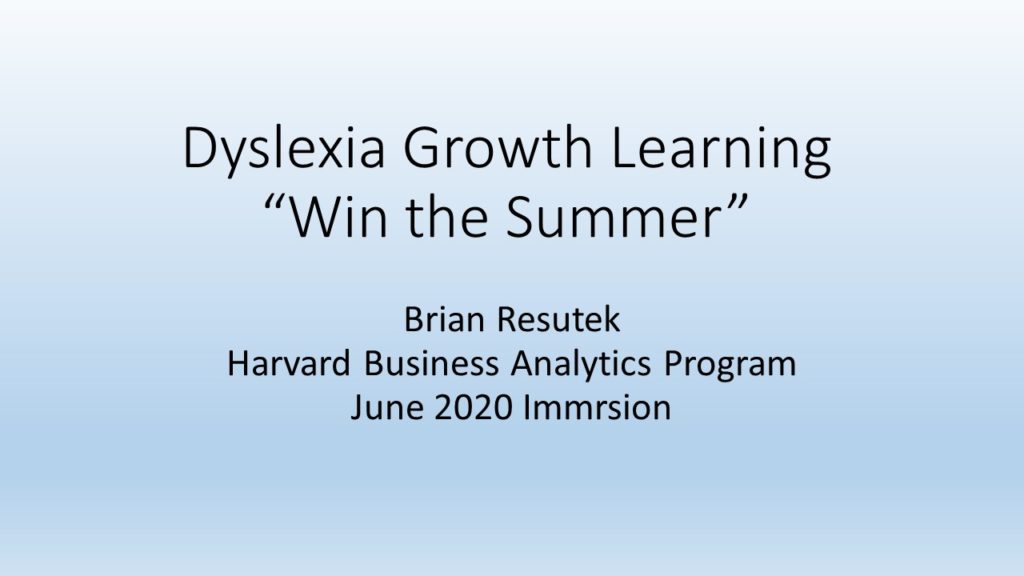
Presenter Notes: Quick Overview –The opportunity is to establish dyslexia camps for children (K-6) to meet a critical need that is missing in today’s educational space. While ultimately identifying and incorporating a teaching approach conducive to dyslexic students in the traditional classroom setup is the most ideal, this solution is likely decades away. While 1 in 5 individuals have dyslexia, less than 0.3% are obtaining the proper teachings to help with this lifelong condition.
Through summer camps, this offers students and parents some classroom and multi-sensory approaches with other students while helping close the reading gap that severely impacts dyslexics throughout their lifetime of learning. There is a major supply and demand mismatch that is opportunistic from a financial, awareness and most importantly educational gain.
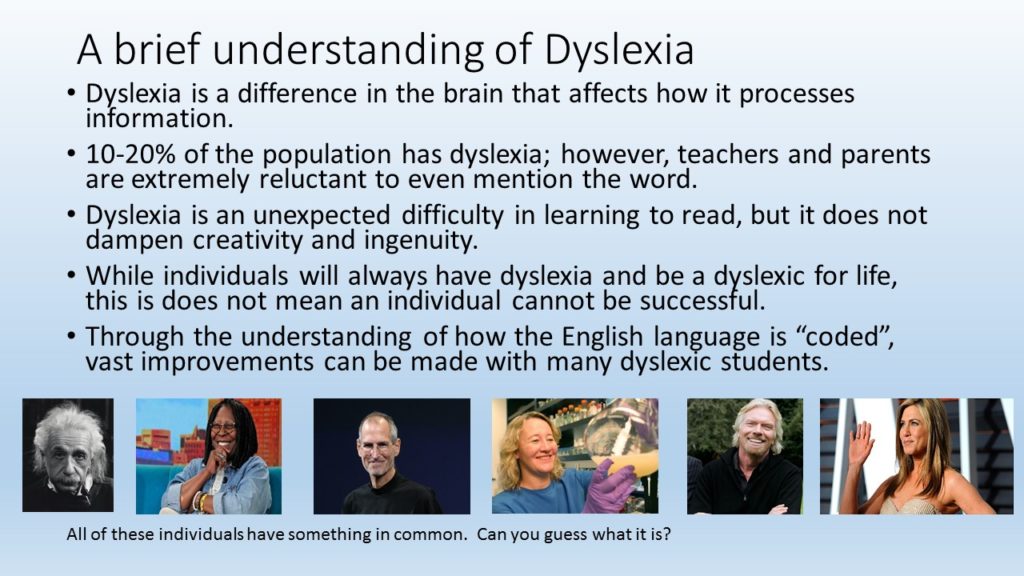
Presenter Notes: An individual is born with dyslexia and gene heredity playing a role in some cases. Introduction of personal story. Dyslexia takes away an individual’s ability to read quickly and automatically, along with retrieving spoken words easily, but it does not dampen creativity and ingenuity. In fact, there are numerous successful dyslexic individuals as other parts of their brain are completely functional. Many dyslexics have no difficulties assimilating into highly advance courses and schools. Some of the best minds and leaders of corporations are dyslexic such as Einstein and Nobel Prize winner, Carol Griender; CEOs, such as Richard Branson and Steve Jobs; and celebrities such as Jennifer Aniston and Whoopi Goldberg

Presenter Notes: Good readers show more activation in the left hemisphere in ALL areas needed for reading. phonological processing, orthographic mapping for sound/letter connections for spelling and writing, interpretation of sounds and faster activation of the brain for rapid automatic naming responses. Dyslexics show disruptions in the rear reading system in the left hemisphere, critical for reading fluently. There is a different distribution of metabolic activation when working on the same tasks as non-dyslexics.
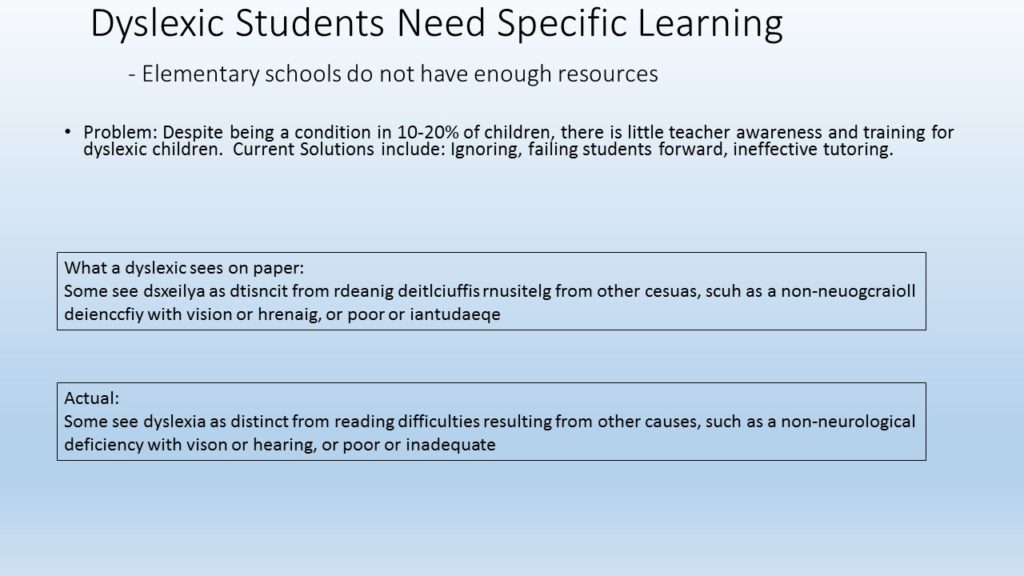
Presenter Notes:Animate these slides to explain – Explain personal story of the options available and the spectrum for parents. This is a powerful slide for people not understanding dyslexia
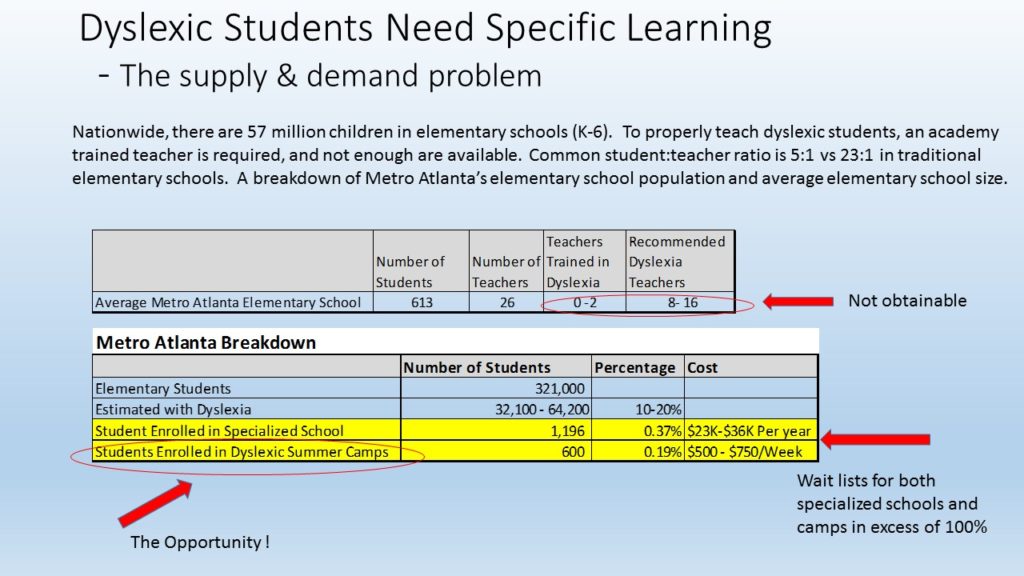
Presenter Notes: Focus on graph one of the average elementary school in metro Atlanta which and that properly trained teachers in dyslexia are not available. This is not the school’s problem as they simply do not have the resources or funding, but there is a major lack of awareness. Chart two outlines the percentages and the opportunity with camps as these camps are significantly easier to run than a school, with equal, if not greater demand (highlight the huge supply/demand mismatch)
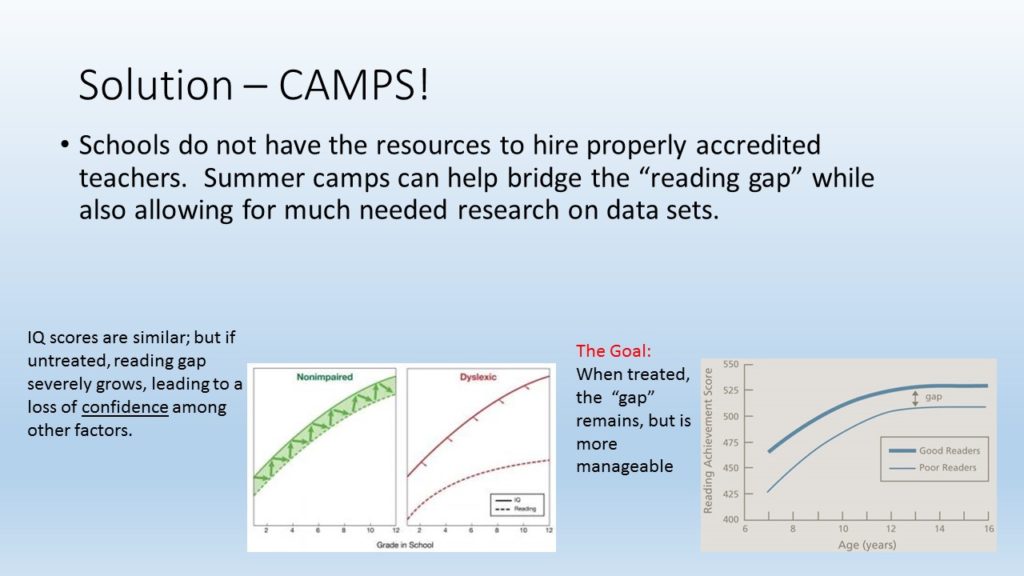
Presenter Notes: Dyslexia only began to be understood in the mid 1980s by some of the nation’s educators. As a result, it has taken close to 30 years for a new generation of teachers to even fully understand dyslexia. Parents and teachers do agree on the importance of the reading gap with age – also note that IQs are equal, if not greater than non-dyslexics. Fact: The single largest indication of success is continued learning in the summertime. Focus on the “gap” as this is the main point of the summer camps and development. The IQ is a further point that dyslexia has nothing to do with intelligence – it’s related to reading.

Presenter Notes: (joke on SWOT, but still useful!) -Current camps understand the lack to supply and appear willing to assist (camps are not a threat to their school). Actually offer another alternative during summer 2) Ability to use data such over the course of camps with possible integration into school year to gauge growth and conduct research.3) Can partner with other camps running half-day programs to integrate into a full camp program 4) Can be replicated by existing camps or created by outside sources (Mitigate: This threat exists in most businesses, but first to market and partnering with the schools will aid); 5) Various online sources and teaching manuals already exist. Mitigate: These are helpful solutions, but dyslexia is a multi-sensory approach and over 3-4 hours is not usually successful via an online platform.
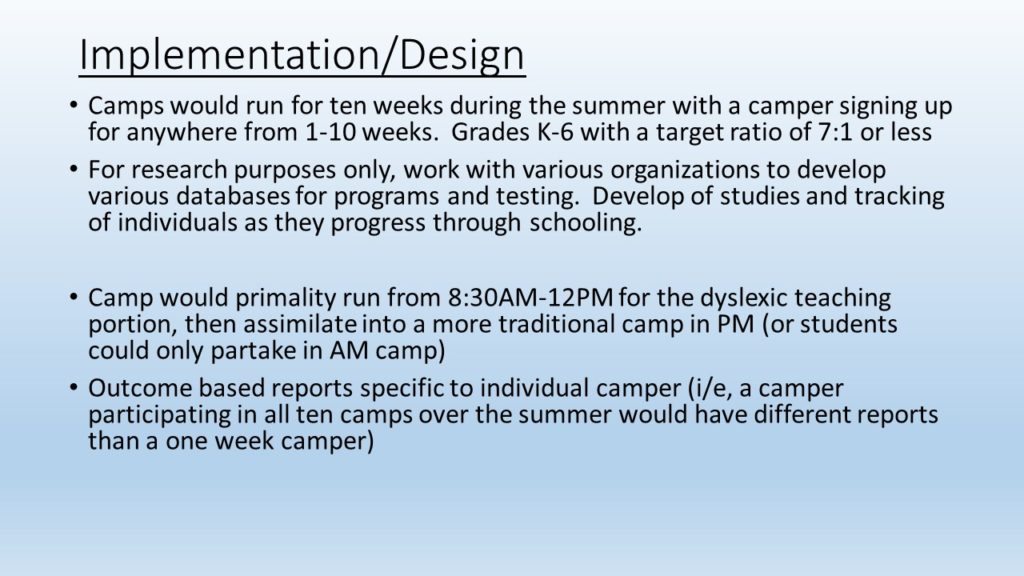
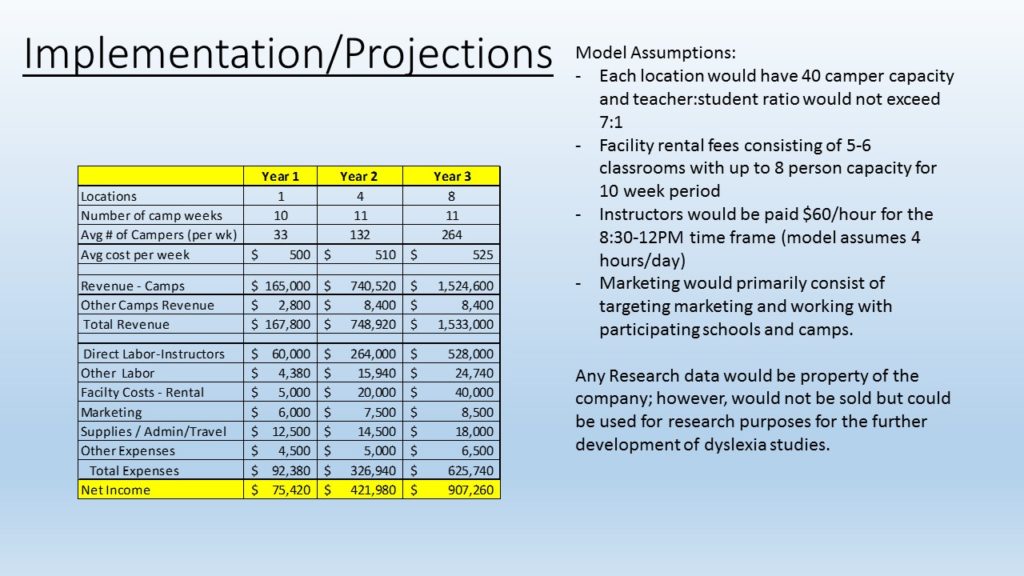
Presenter Notes: Walk through model and assumptions. Describe the team. Direct labor is the highest cost. Model can work at less than 5:1 ratio as well. Orton-Gillingham academy trained teachers would be the standard (describe what this means). Final closure and appreciation of the opportunity.

